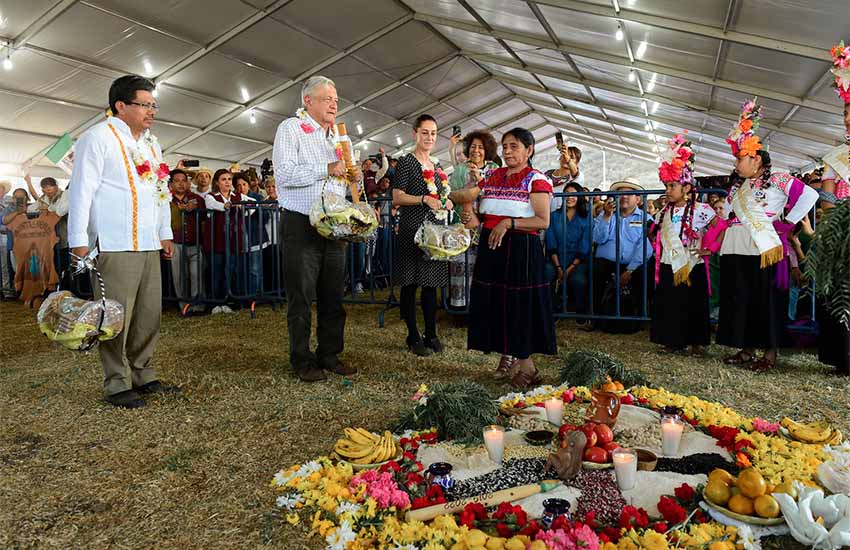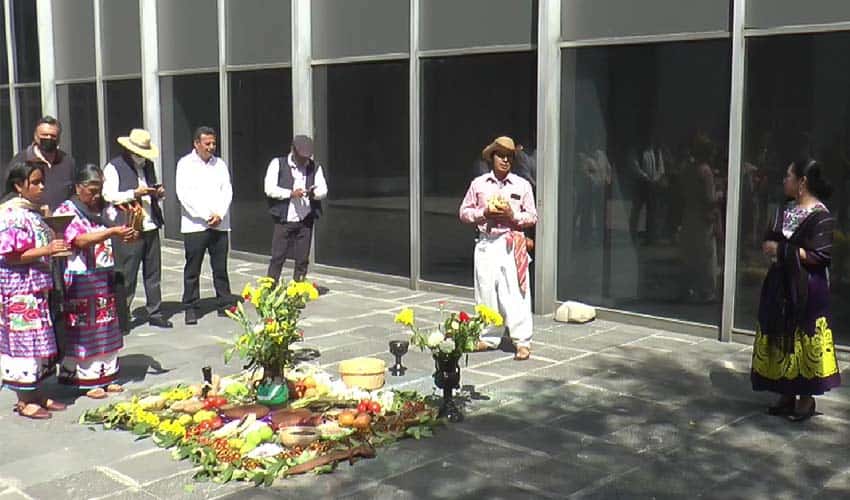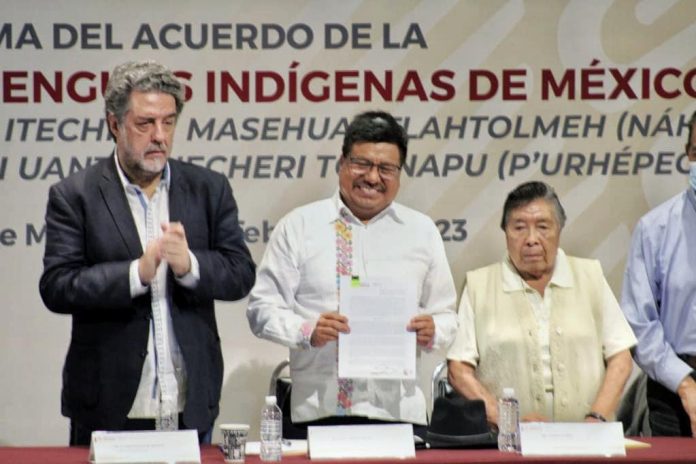A new national university that will teach Indigenous languages will begin classes by September, Mexico’s National Institute of Indigenous Peoples (INPI) announced.
Adelfo Regino Montes, INPI’s general director, signed the foundational documents for the University of Indigenous Languages of Mexico (ULIM) at a ceremony organized to coincide with International Mother Language Day, on Feb. 21.

“The creation of ULIM seeks the teaching of courses and the establishment of research faculties, with the purpose of strengthening and developing the linguistic heritage of Mexico, based on respect and recognition of multilingualism,” a statement by INPI said.
The ceremony at Mexico City’s Tlatelolco University Cultural Center opened with a ritual of gratitude to Mother Earth and featured speeches by leaders of several Indigenous and educational institutes, including some in Indigenous languages.
Natalio Hernández Hernández, coordinator of the ULIM project, explained that the university will operate through a mix of online and face-to-face classes. The campus is being built in Santa Ana Tlacotenco, in Milpa Alta, but the university will open in provisional headquarters no later than Sep. 13.
Students will learn through linguistic immersion and be evaluated partly through community projects that promote the development of their chosen language.
The ULIM will initially offer four degrees in Teaching of Indigenous Languages; Interpretation and Translation of Indigenous Languages; Literature in Indigenous Languages; and Indigenous Intercultural Communication.
“This is the raw material of our nascent university; we are going to make a wide call to the whole country to form part of our teaching staff, as well as the academic and research teams for each degree,” INPI director Regino Montes said.
He said that the ULIM aims to fulfill a commitment made by President López Obrador to the Nahuatl Indigenous people of Milpa Alta on Feb. 9, 2020.
“This university, unlike in the past, is not a unilateral creation from above; here the people of Milpa Alta have been heard and consulted,” he said.

Mexico’s National Institute of Indigenous Languages (INALI) counts 68 different Indigenous languages in Mexico, with the most widely spoken being Nahuatl and Maya. There are around 7 million speakers of Indigenous languages in the country, according to the most recent census data.
But the number of speakers is dwindling, and several languages are at risk of extinction, due in part to historic prohibitions on using Indigenous languages in educational spaces.
Although no such prohibitions exist today, Claudia Morales Reza, president of the National Council to Prevent Discrimination (Conapred), stressed at Wednesday’s ceremony that Indigenous speakers in Mexico still face systemic discrimination.
“The [ULIM] has the tasks of recovery, revitalization, promotion and encouragement of the use of national languages,” said Bertha Dimas, the INPI’s coordinator of cultural heritage, research and education.
“The results we expect from the ULIM’s academic activities will be to increase the effective number of speakers, so that we do not lose one more language.”
With reports from Sin Embargo and Pie de Página
